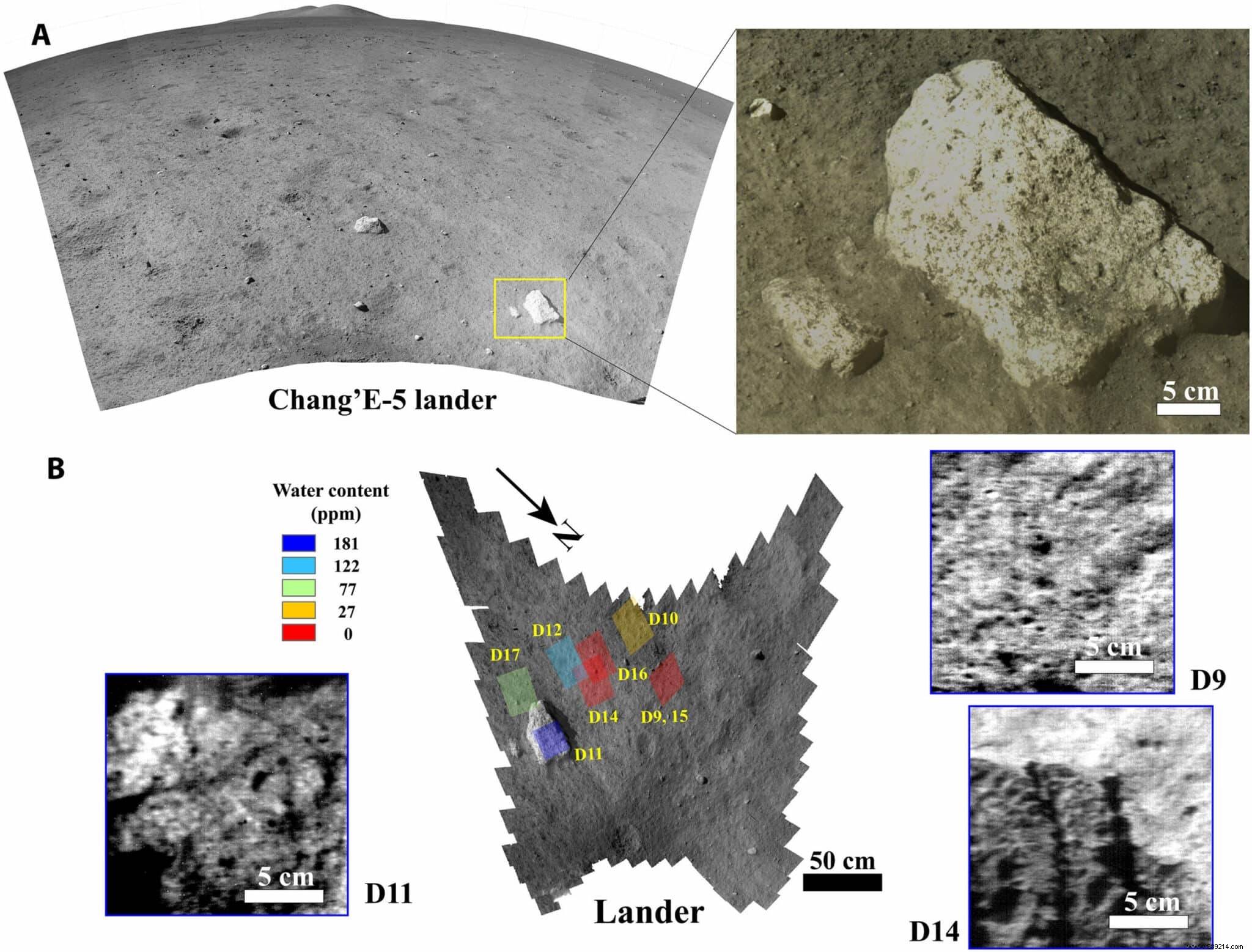Two years ago, China landed a lander on the Moon in an effort to bring back the first samples since the Apollo era. On site, analysis of the reflectance spectra of the surrounding area also identified the presence of water at an average of 120 parts per million. This is a first.
China had already landed several landers and rovers on the Moon as part of its exploration program. The Chang'e 5 mission, on the other hand, was undoubtedly the most ambitious. Like the Apollo missions fifty years ago, it was indeed intended to bring samples of lunar soil back to our planet.
To do this, the lander landed two years ago north of Oceanus Procellarum, considered one of the youngest volcanic areas on the surface of the Moon, before bringing nearly two kilograms of rock back to Earth a few weeks later.
However, the lander didn't just collect samples. On site, several instruments also analyzed the surrounding lunar rock. In the spectroscopic images of the lunar regolith, the scientists then isolated the presence of water molecules . The results of their work are published in the journal Science Advances.
We have known for a long time that there is water on the Moon, in particular thanks to several orbital missions and the various samples brought back to Earth, but detecting this vital material directly on site is a first. According to measurements taken using the Chang'e-5 Lunar Mineralogical Spectrometer, this water can be found up to an average of 120 parts per million in northern Oceanus Procellarum .
Interesting fact:measurements of a rock located not far from the lander revealed a higher water content, up to 180 parts per million . This very light block punctuated with numerous cavities would have an underground volcanic origin. For the researchers, this suggests that there could be an additional source of water inside the Moon in addition to that related to the minerals of the lunar regolith (the upper layer of stones and dust on the surface). P> 
Further study will be needed, but this new discovery suggests that specific volcanic deposits may be required to sustain a long-term human presence at lower lunar latitudes where ice deposits are less likely to form.
Remember that NASA will also soon be responsible for probing the presence of water on the Moon in situ . The VIPER rover will land on the lunar south pole by 2023. Its objective will be to map and analyze water ice concentrations in near real time. A little earlier, the start-up Astrobotic will also send its first rover to the Moon in order to search for traces of water at the level of the south pole on behalf of NASA.